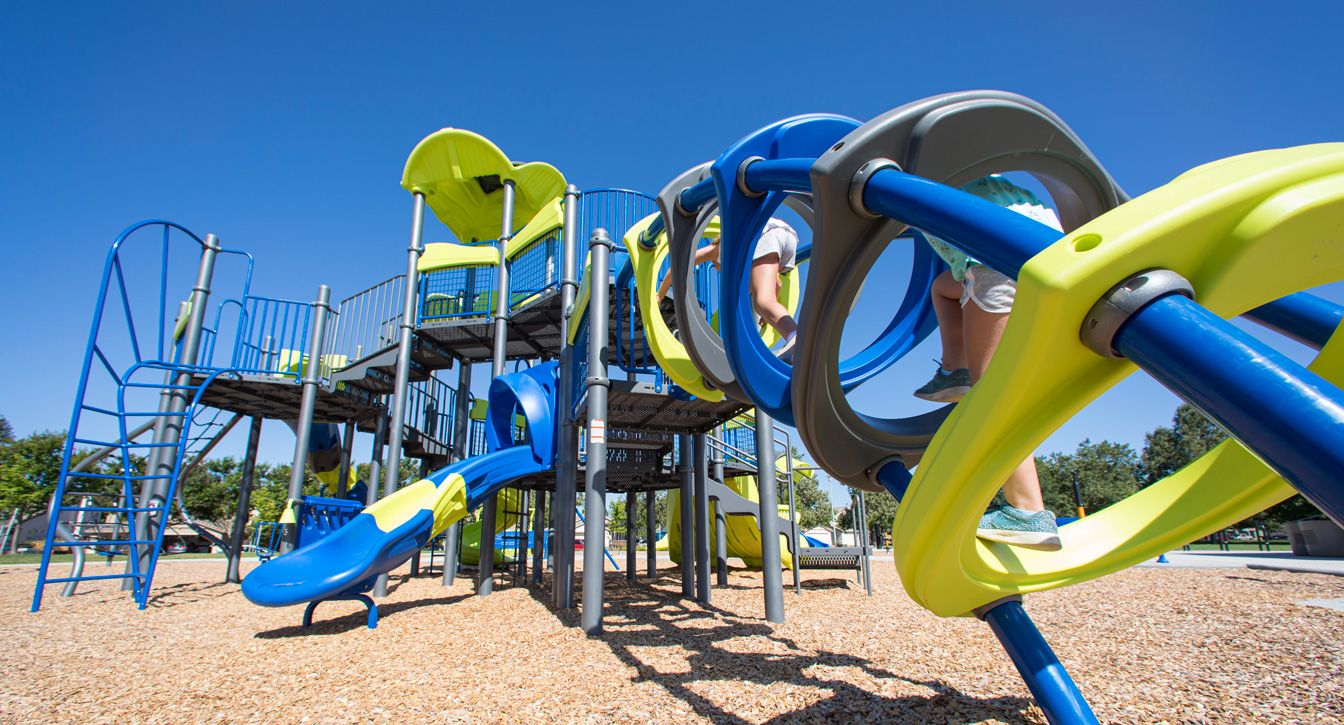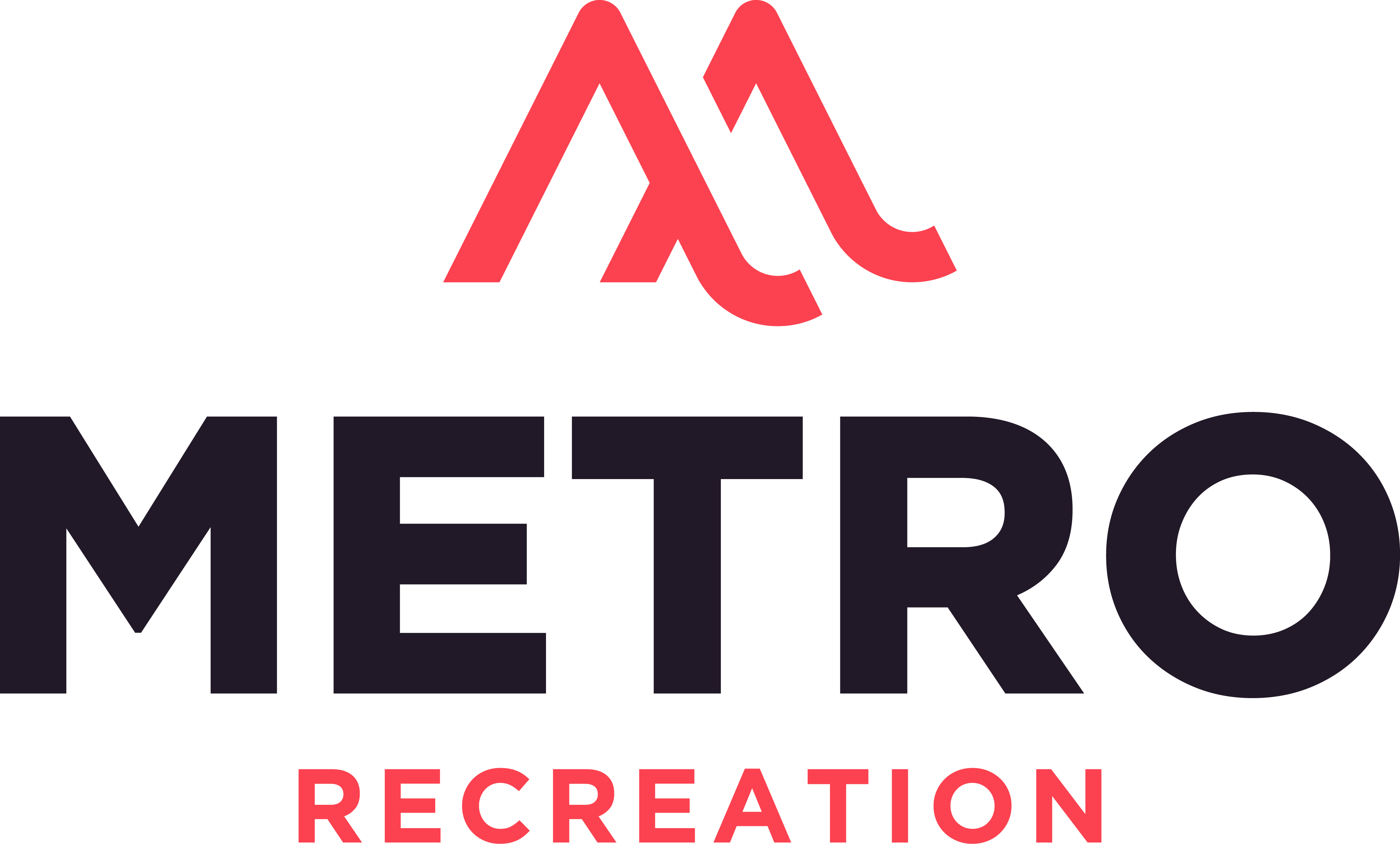

A well-designed playground with age-appropriate equipment and plenty of room to run, jump, swing, and make believe is one of the joys of childhood. But a safe and sound playground space doesn’t happen by accident.
Creating a safe playground environment for children requires expert advice up front and regular ongoing safety audits and inspections from the most knowledgeable professional in the industry: a National Program for Playground Safety CPSI (Certified Playground Safety Inspector).
At Metro Recreation, we’re the fun experts—but we never forget about safety. To ensure the highest standards in your playground design and equipment, we employ a CPSI to make site visits, perform safety audits, and do professional inspections for all play spaces. They will make sure that all your equipment and services are in good repair, fully functional, and compliant with safety regulations. https://metrorecreation.com/services/
Even the most carefully designed play space may begin to degrade over time. The only way to ensure that playgrounds stay safe for the children who play on them is to make note of any issues and address them in a timely manner.
A CPSI is thoroughly familiar with the laws and best practices that govern playground design and equipment, including the Americans with Disabilities Act (ADA). ADA Standards apply to all public playgrounds and include guidelines pertaining to entrance access, transfer platforms, steps, and connecting ramps that allow all children to enjoy a safe, accessible playground experience.
The number of injuries and even deaths that occur annually on playgrounds is staggering, and the single most important reason why regular playground safety inspections are so vital. A vast majority of incidents could have been prevented by proper safety audits and regular maintenance inspections.
These inspections play a key role in providing the protection and safety that you expect for your children when they visit the playground. Here are five examples of the types of things that the certified playground safety inspector will focus their safety audit and recommendations on:
Equipment
Almost 25% of playground injuries are the result of equipment problems, including design flaws, poor assembly, and inadequate anchoring. Sudden tilts or shifts in play equipment that is improperly anchored according to the manufacturer’s recommendations is the most serious safety risk for children. Other injuries involve head entrapment on equipment where entrances were too small or between guardrails that were not improperly spaced and clothing that becomes entangled with ropes or chains on the equipment.
Other issues a CPSI will catch include
- Equipment bolts protruding more than two threads. These can snag clothing and even cut children if the exposed edges are sharp.
- Damaged “S” hooks used to attached swing seats to a chain that could catch on clothing, resulting in strangulation
- Poorly located rungs and handles jutting out from the structure that could damage eyes.
- Unanchored climbing ropes or frayed areas.
Surfaces
A professional playground inspector will audit the use of surfaces on the playground, especially around equipment. The Consumer Product Safety Commission recommends surfaces like poured rubber, wood chips, pea gravel, wood chips, synthetic tiling, or engineered wood fiber be used under equipment to cushion falls. Replacing concrete, grass, and blacktop with these more pliable surfaces is a small change that will have a huge impact on safety. These recommended surfaces should have a depth of around 12 inches and extend at least 6 feet from equipment edges. Are “zone use” guidelines in place to ensure that swings and slides have enough specialty surface material extending out in all directions to protect the child who falls during play?
Spacing
A certified playground safety inspector knows the specific guidelines that dictate the spacing of equipment. They will watch for areas around swing sets and other equipment to see if they have been clearly marked to discourage children from walking directly into another child that is swinging? Equipment that is well spaced also eliminates the possibility of a child falling off of one piece of equipment and hitting or landing on another.
Tripping Hazards
There should be no exposed concrete or uneven areas on the ground that will trip children, including areas of erosion, uneven ground, or sidewalks leading into the play area. An inspection will also pick up on exposed stumps, tree roots, or large rocks that could cause a child to fall or trip.
Wear and Tear
While a playground may be safe when first installed, it’s likely to degrade over time. Equipment can weaken over time, resulting in areas that bend or deteriorate. An inspection will note any equipment that has been damaged or is no longer stable. The report will also indicate where the surface materials are no longer at the recommended depth for maximum safety. Just a few inches’ difference in the depth of the surface material can result in injuries that are much more severe.
A safety inspection will flag wooden equipment that has deteriorated due to exposure. A child can easily get large splinters, become caught on loose pieces of wood, or even fall through damaged wood platforms.
It’s the job of a certified playground safety inspector to catch these hazards before they result in injury. Have one visit prior to opening the playground, and then regularly thereafter to ensure that all potential safety issues are noted and addressed promptly.
With 20 years of experience, Metro Recreation is proud to offer playground inspection services from a licensed and Certified Playground Safety Inspector to parks and recreation departments, landscape architects, public schools, builders, child development centers, municipalities, homeowners associations, and churches. Let us help you build a playground that will keep children entertained safely for years to come.







